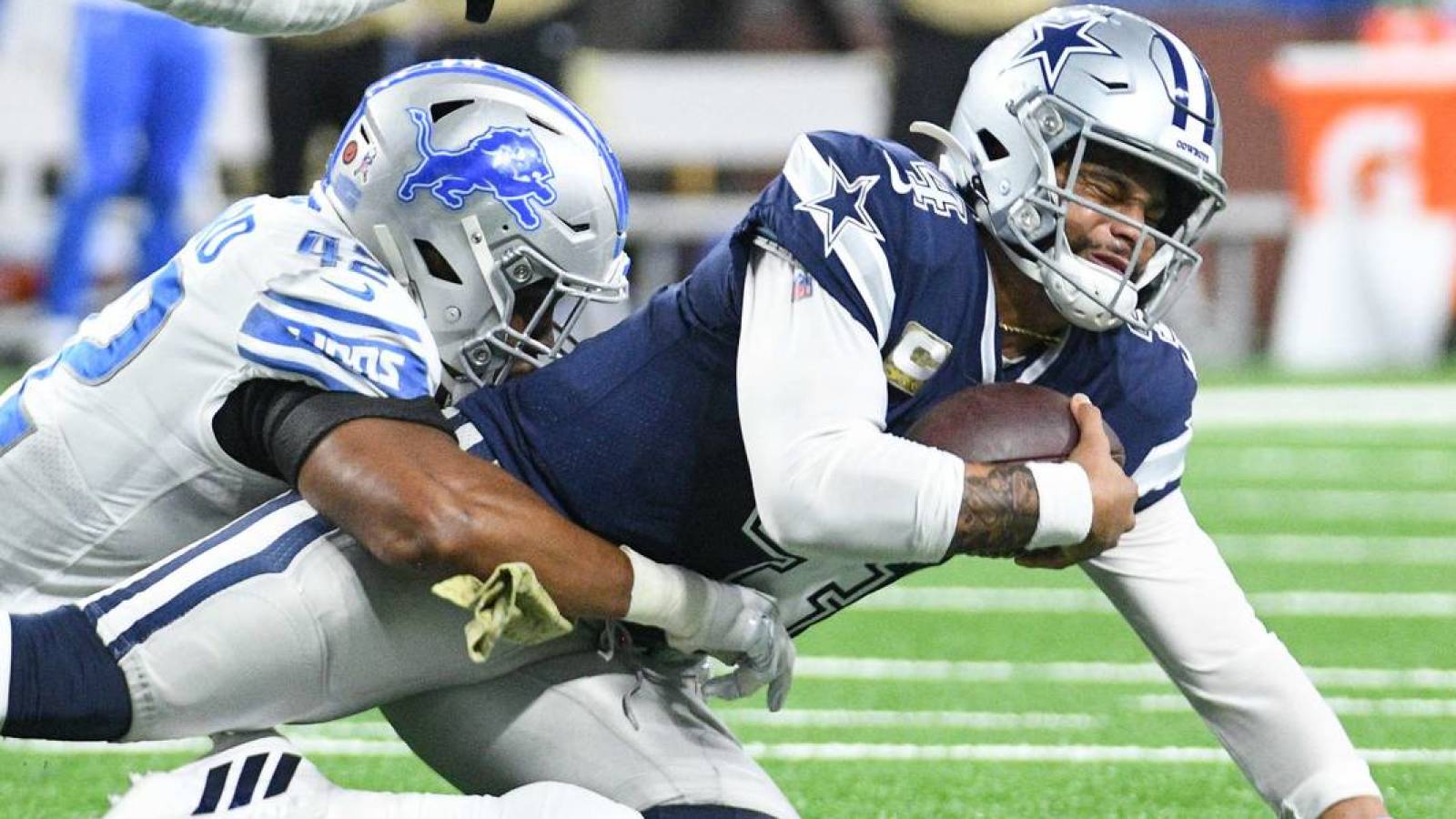Sal Monella
Man among boys
- Messages
- 83
- Reaction score
- 15

The nucleus of the 2019 Cowboys may be their best since the one that helped Dallas dominate the NFL in the 1990s. But this hugely underachieving team is 6-7, tied for first with Philadelphia in the dreadfully weak NFC East, and major issues loom. Longtime head coach Jason Garrett rightfully appears to be a lame duck, and quarterback Dak Prescott's expected off-season signing could limit the team's ability to build a roster in the next decade.
For the Cowboys to be this ineffective considering the advantage Prescott’s rookie deal provides is stunning.
Dallas has All-Pro center Travis Frederick back after he missed last season because of a career-threatening disease, and the Robert Quinn-Michael Bennett defensive line tandem is better than DeMarcus Lawrence’s previous edge-rushing supporting casts. Prescott also has enjoyed a full season of wide receiver Amari Cooper, along with veteran receivers Randall Cobb, Jason Witten and improved wideout Michael Gallup. Dallas squandering these upgrades, and the final year of a fourth-round quarterback contract, puts the Cowboys among the decade's most disappointing NFL teams. (See also 2010 Vikings, 2011 Packers and Eagles.)
The early Russell Wilson-led Seahawk teams obviously outflanked these Cowboys defensively, but those Super Bowl squads' offensive talent could not quite match what Dallas has assembled. A roster built around Carson Wentz’s rookie contract lifted the Eagles to a championship, but that offensive line -– at least, what Philadelphia brought to Super Bowl LII –- was not as talented as Dallas’ historically rare combination of All-Pro blockers. This season has largely wasted a year of their primes and will end adding approximately 350 touches to running back Ezekiel Elliott’s odometer –- which has already entered seldom-explored terrain for the running back’s age group.
Jerry Jones' off-season extensions for Lawrence, Elliott, linebacker Jaylon Smith and offensive tackle La’el Collins illustrated the owner's faith in this nucleus. Dallas being worse than last season’s 10-6 team does not compute, talent-wise. The Cowboys’ No. 22 defensive DVOA figure (after last season's ninth-place ranking) does not bode well for a team likely to lose top cornerback Byron Jones in free agency.
The Packers and Seahawks will make the playoffs with a $30 million-plus quarterback on their roster. Both passers are superior to Prescott, whose next salary will land in the ballpark of Wilson and Aaron Rodgers. Coupled with this year's extensions, and either a Cooper franchise tag or long-term re-up, the Prescott re-up could lock the Cowboys into an upper-middle-class team for the foreseeable future. Prescott’s next deal will weaken the franchise's 2020 improvement avenues.
If the Cowboys are headed toward that reality, they could have at least justified it with a deep playoff run this season. Instead, Dallas -- which somehow could still make the playoffs -- is likely to extend its streak of falling short of the NFC Championship Game to 24 years. That will make Prescott and Cooper extensions somewhat depressing. Dallas is 1-2 in the playoffs with Prescott, the former Offensive Rookie of the Year.
Although the bulk of the teams that drafted starting quarterbacks under the current CBA needed to use a first-round pick or trade significant draft capital to acquire them, the Cowboys landed theirs at pick No. 135. That called for a four-year, $2.7M contract. For the Dak investment to pay off this much and the team still sitting in this position reveals poor coaching and shaky management.
Allowing Garrett to coach three straight 8-8 teams from 2011-13 did not appear to matter too much, despite public outcry for his ouster even then. Those Dallas teams possessed inferior capabilities compared to recent rosters. But by not firing Garrett then, Jones allowed his sideline proxy to interfere in the late 2010s –- when the owner/GM had built better rosters. Garrett has delivered some quality work in Dallas, most notably the 2014 and ’16 seasons, but his recent underachievement/thus-far-ugly lame-duck stretch will cost the franchise.
Jones also should shoulder blame. Despite the Cowboys’ success in turning most of their 2010s first-round picks into quality starters, an owner possessing this much roster control is an antiquated arrangement. How could the franchise not be better off with a purely personnel-focused executive calling the shots rather than the Jones family? Such a change would help attract better coaching candidates.
An owner's omnipresence on this level -– from personnel control to constant public assessments of the team -– is an issue Garrett’s 31 contemporaries do not have to navigate.
While Garrett’s 10-year stay has run its course, the Cowboys’ 31st-year owner’s unusual role has weakened him. Unless Jones steps back, it will reduce the impact of Garrett’s successor. This macro issue should be on the 77-year-old boss' mind as he prepares to hire his first coach from outside the organization since Wade Phillips in 2007.
Jones will need to show off his deal-making skills soon, because if the team cannot extend Prescott by March 10, a Dak franchise tag will send Cooper to free agency. It would be an organizational failure if the Cowboys lose Cooper, whom the team was surprisingly correct in acquiring from Oakland for a first-round pick.
An argument can be made the Cowboys did well with their bevy of backloaded extensions this off-season, with a forthcoming CBA set to alter the league’s financial landscape. The Cowboys' late-2010s underachievement, power-structure issues and difficulties the franchise will face once Prescott signs his new deal, however, bring enough uncertainty to cause major concern going into the next decade.


